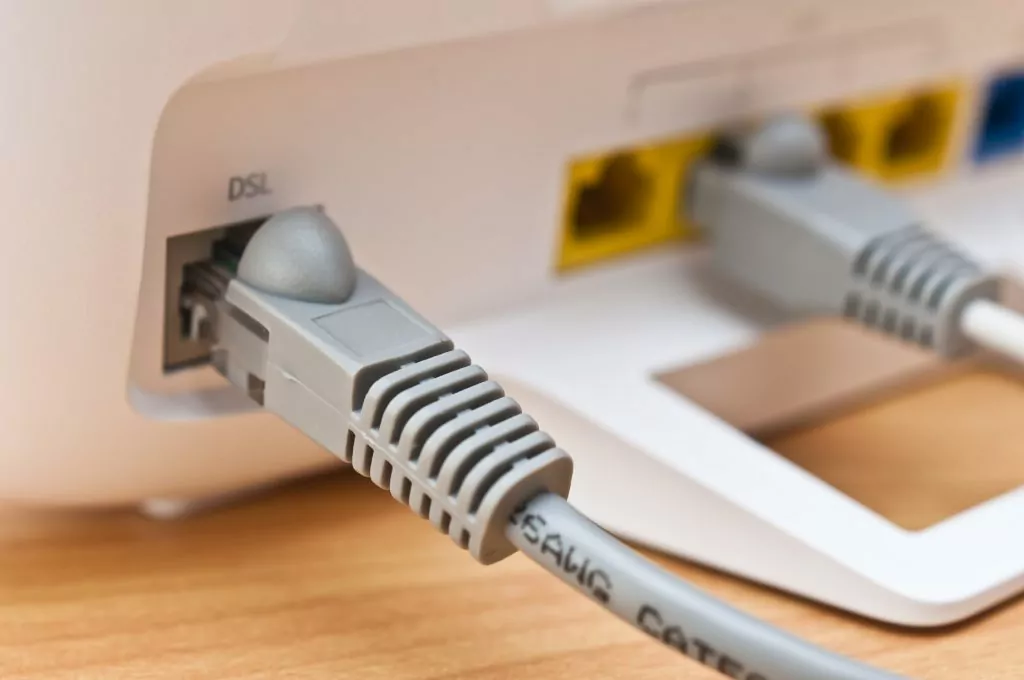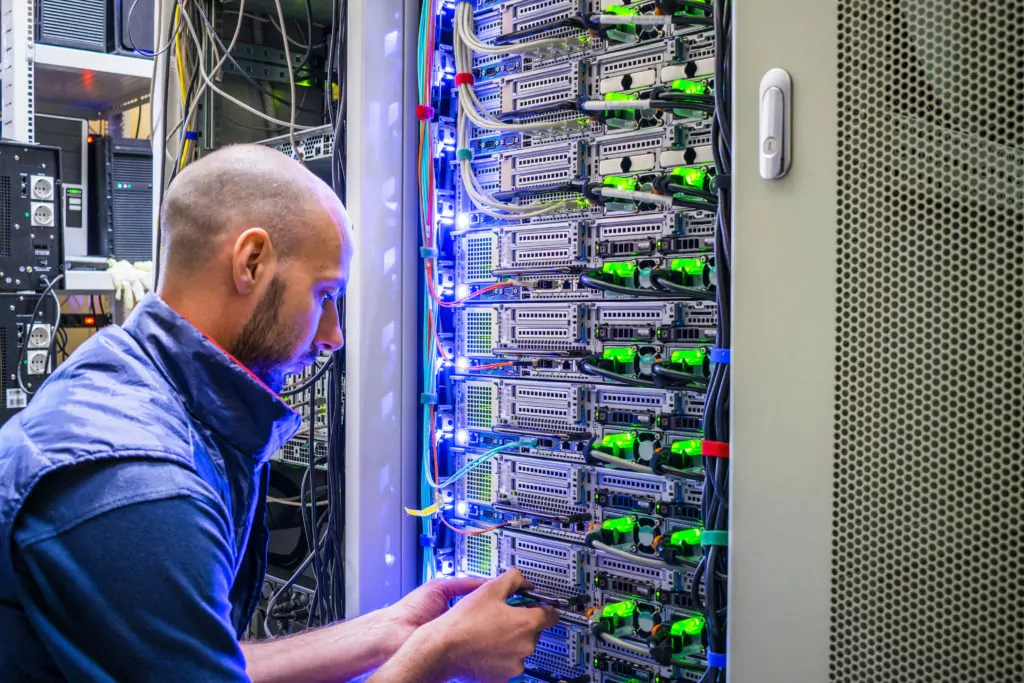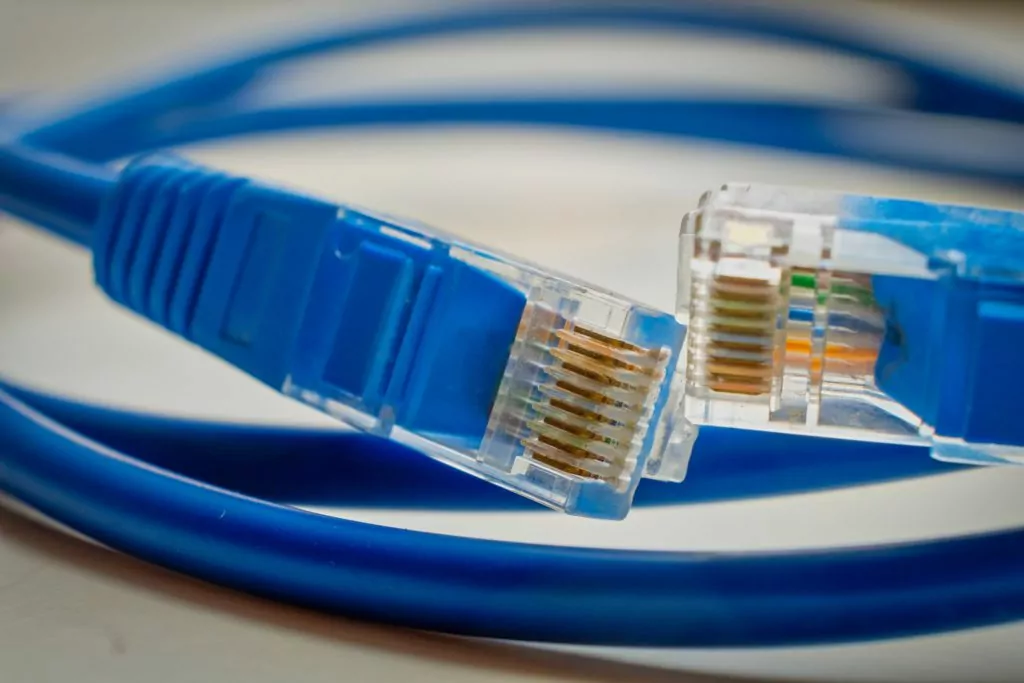This is how to connect a landline phone to a PC for internet.
You’ll learn:
- The technical details
- The options you have
So if you want to learn how to connect your landline phone to a PC, then you’re in the right place.
It’s time for the first step!

Connect Your Landline Phone to PC for Internet
Gone are the days when we had to tell our mom to get off the landline because we wanted to surf the Web.
With high-speed internet available worldwide, we can now enjoy a relatively free online experience—with occasional hiccups, that is.
Still, landlines play a vital role in delivering high-speed connections to our household. In 2021, however, these connections rarely happen over dial-up.
Today’s landline internet connections are DSL, which is faster, more stable, and more reliable than dial-up.
So, how do you connect your landline phone to your PC and get a stable internet connection?
What Is DSL and How Does It Work?
First, let’s go over DSL from a technical perspective and understand how your landline can even deliver an internet connection to your devices.
DSL stands for Digital Subscriber Line, and it’s a type of connection that uses copper wires inside your telephone lines to connect you to the broader internet.

When researching DSL, you’ll often see two terms being mentioned: SDSL and ADSL (symmetrical and asymmetrical DSL). These terms refer to how much bandwidth your connection offers for download and upload.
A symmetrical DSL connection will deliver approximately the same download and upload speeds, while an ADSL connection will prioritize download speeds.
If you’re a DSL user, you’ve probably noticed that your download speeds are much higher. That’s because you’re using ADSL. Don’t worry. They’re by far more common than SDSL.
The logic behind this is simple: most households consume a lot more content online than they produce or stream. And, to consume content, you’ll need better download speeds.
A typical home where no one is a gamer/streamer/internet worker will get by just fine with upload speeds under 1 Mbps.
Compared to other types of internet connections (cable, satellite), DSL is fairly average. It can reach speeds of up to 100 Mbps, making it slower than cable but faster than satellite internet.
However, DSL is available to slightly more people than cable (because more people have landlines).
If you are a gamer, you might be interested to know that DSL has a higher lag (latency time) than cable internet, on average.
The Role of Your ISP
To connect your landline to your PC and get a stable internet connection, you’ll need a contract and equipment from your Internet Service Provider.
In most cases, they’ll give you everything you need to connect your landline and PC (apart from an Ethernet cable, in some cases).
Why can’t you do this without your ISP?
Theoretically, you could connect to the internet even without a service provider. That would also mean that you’re a millionaire and have solid connections either in the government or one of the companies that form the Tier 1 network of the internet.
You’d need several miles of cables, routers, modems, switches, and an extensive infrastructure that can connect you to the internet’s data streams.

Assuming that you have nothing from this list, ISPs play a crucial role in delivering a DSL connection to your household. The finance and manage the infrastructure needed to make sure your connection is up all the time (or at least most of the time).
The first step in getting your landline phone connected to the PC is to have a service provider deliver a DSL connection right to your wall jack. From there, you’re on your own.
How Can You Connect Your Landline Phone to PC for Internet?
Some ISPs will provide you with an Ethernet cable or even get that cable directly to your PC.
In that case, all you’ll need to do is plug your cable into the PC or laptop.
Otherwise, there are four main touchpoints you should take care of to make sure your PC has a DSL connection. Let’s go through them, one by one.
Ethernet Wall Socket Wiring
You’ll want to make sure that your wall socket is wired right. If your ISP did this, chances are they did it right.
However, if a previous tenant or your landlord wired the socket on their own, they might have missed something.
Here’s the thing: each ethernet cable (and, by extension, each wall socket) has four wire pairs and eight pins.
The correct wires need to be connected to the right pins, or the connection won’t work. That has to be the case throughout the whole wiring: from your patch panel to your wall socket and ethernet jack.
There are two wiring standards, each color-coded for easier orientation: T568A and T568B. It doesn’t matter which one you use. The only thing that matters is to use the same standard throughout the whole connection.
Router/Modem
Your ISP will also have provided you with a router and modem (or a single device with both functions). This device is in charge of routing your internet connection to other devices.
The router needs to be connected to the main source of internet in the household (in this case, your wall socket).
Ethernet Cable
The next thing you need is an ethernet cable that goes from the wall socket to your device.
There are different types of cables, all capable of different speeds. The Cat5e is arguably the most popular, and it can provide you with speeds of up to 1 Gbps. Newer categories, however, can provide even higher speeds. For example, the Cat6 cable can go up to 10 Gbps.

But, if your internet plan can’t give you more than 1 Gbps (which is already impressive), you don’t need to think about ethernet cables too much. Your provider, not your cable, will set your download speed.
Choose a cable of appropriate length and plug it into your router on one end and your PC/laptop on the other.
Your PC and Laptop
The last element in your connection is the device you want to plug the cable into.
On your PC, this is easy: most desktop towers will have an ethernet port on the back. Plug the cable in, and you’re set. There’s no need for any additional tweaking.
Your laptop, on the other hand, might not have an ethernet port. In that case, you’ll need an Ethernet to USB adapter. It will hardly cost you more than $15, and it provides a simple solution for laptop owners whose devices don’t have an ethernet port.
Does a DSL Connection Have an Impact on Your Calls?
Finally, let’s put this question to rest.
Since the old dial-up days of slow internet, any connection that happens over landlines has been getting a bad rap.
In short, your DSL connection has almost nothing to do with your landline when it comes to bandwidth, frequencies, signals, or interference. While, yes, they use the same copper wiring, your DSL internet uses different frequencies that don’t interfere with your phone lines in any way.
So, you can rest assured that both your phone and internet will work just fine together.
Can You Connect Your Landline Phone to Your PC?
You can do this, but it’s not as simple as plugging your landline into your PC or laptop. Your landline uses analog signals, and your PC/laptop uses digital ones, so you need a device that can “translate” these signals.
An analog telephone adapter is usually purchased from a VoIP (Voice over Internet Protocol) service provider. This device will translate incoming analog phone calls into digital signals and outgoing digital calls into analog signals to be transmitted over your phone lines.
To get this device, you’ll likely have to subscribe to a monthly plan with a VoIP provider that sells not only the adapter but minutes, numbers, voicemails, etc.—just like any other service provider out there.

